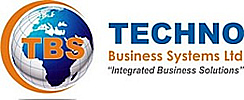 Organisations that have legal entities in multiple locations struggle with the challenges of optimising operational efficiencies and control within their distributed branches. Branch Accounting lets you simplify and streamline business processes and transactions between all of these entities. Branch Accounting introduces bi-directional synchronisation and consolidation of data. Information is now shared, consolidated and saved on both the centralised system at head office as well as at branch level. A practical example is that all financial, inventory and pricing data is always up-to-date and consistent across branches. Product prices can be changed at head office level and automatically pushed to all branches. Some of the other benefits of Branch Accounting include the ongoing ability to transact at local level even if the ADSL lines or virtual private network goes down. In addition, any potential loss of data due to fire, theft etc. can be kept at a minimum because the regular consolidation and replication activity performed by the system means that data is housed in two locations, over and above any off-site backup processes. Data for a particular branch can be rebuilt and sent to the relevant branch within hours of loss of data.
Organisations that have legal entities in multiple locations struggle with the challenges of optimising operational efficiencies and control within their distributed branches. Branch Accounting lets you simplify and streamline business processes and transactions between all of these entities. Branch Accounting introduces bi-directional synchronisation and consolidation of data. Information is now shared, consolidated and saved on both the centralised system at head office as well as at branch level. A practical example is that all financial, inventory and pricing data is always up-to-date and consistent across branches. Product prices can be changed at head office level and automatically pushed to all branches. Some of the other benefits of Branch Accounting include the ongoing ability to transact at local level even if the ADSL lines or virtual private network goes down. In addition, any potential loss of data due to fire, theft etc. can be kept at a minimum because the regular consolidation and replication activity performed by the system means that data is housed in two locations, over and above any off-site backup processes. Data for a particular branch can be rebuilt and sent to the relevant branch within hours of loss of data.
Branch Accounting assists in:
- Increasing productivity as a result of time saved and simplified transactions
- Minimising error potential with once-off entry of information
- Provides visibility into business activities with the complete audit trail, which details transaction histories per branch
- Creating efficient, cost-effective transactions with affiliate and subsidiary companies
Main features in Branch Accounting:
- Centralised or decentralised accounting
- Document numbers and transaction types per branch
- Ability to merge data to the head office database
- Reports consolidated by branch at head office
- Global and local customers and suppliers
- File Transfer Protocol (FTP) as a communication protocol






